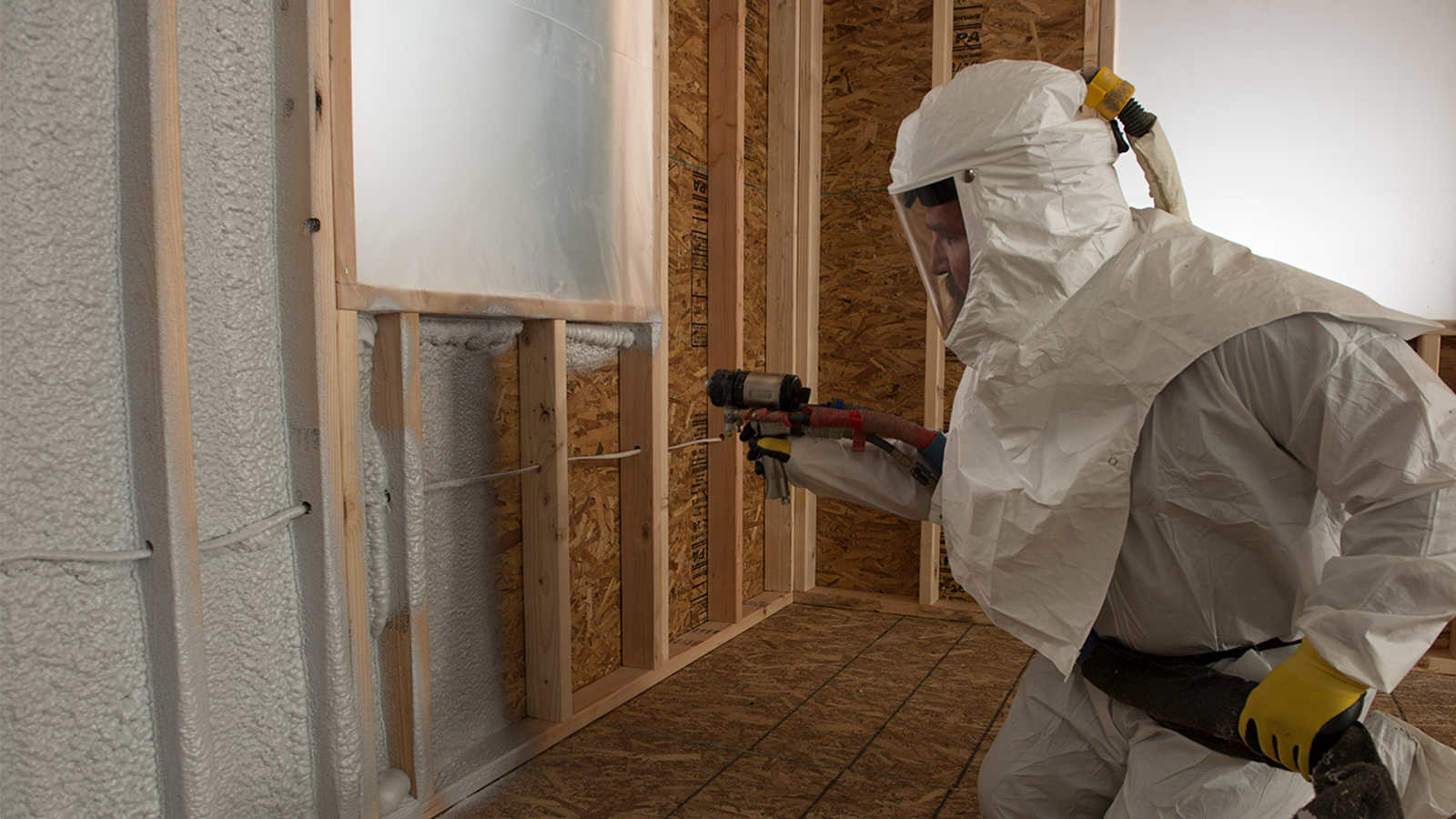How Spray Foam Helps Builders Meet Modern Efficiency Codes

Spray foam insulation plays a critical role in helping builders meet modern efficiency codes for energy conservation and building sustainability. By offering high R-values and superior air sealing properties, spray foam can meet or exceed the energy performance standards mandated by building codes. This article outlines how spray foam contributes to achieving these codes and provides the essential details for builders to make informed decisions.
Modern efficiency codes, such as the International Energy Conservation Code (IECC), require buildings to adhere to strict standards for energy use, air leakage, and thermal insulation. Spray foam insulation is an effective solution to meet these evolving requirements by enhancing building performance in both residential and commercial projects.
Types of Spray Foam for Efficiency Codes
Closed-Cell vs. Open-Cell Foam
The two main types of spray foam—closed-cell and open-cell—offer different benefits when it comes to meeting efficiency codes. Understanding the differences between these types helps builders select the best option for their projects.
Comparison Table: Closed-Cell vs. Open-Cell Spray Foam
| Property | Closed-Cell Spray Foam | Open-Cell Spray Foam |
| R-Value per inch | 6.0 to 7.0 | 3.5 to 4.0 |
| Air Barrier | Excellent air barrier, reduces air leaks | Good air barrier, but less effective |
| Moisture Resistance | Highly resistant to moisture | Less resistant to moisture |
| Applications | Walls, roofs, basements, crawl spaces | Interior walls, attics, ceilings |
| Cost | Higher cost per board foot | Lower cost per board foot |
Closed-cell spray foam offers higher insulation values and acts as a moisture barrier, making it ideal for areas that require high performance, such as exterior walls and roofs. Open-cell foam, while less costly, provides adequate air sealing for interior applications where moisture is less of a concern.
Energy Efficiency Benefits
Spray foam’s superior air sealing and insulating properties are crucial in meeting modern efficiency codes. Below are key advantages that spray foam provides in meeting building energy efficiency requirements:
- High R-Value: Spray foam provides a high R-value per inch, improving thermal resistance and reducing the amount of energy needed for heating and cooling.
- Air Tightness: Spray foam fills gaps and cracks, preventing air leakage and maintaining consistent indoor temperatures. This helps buildings meet air tightness standards set by energy codes.
- Moisture Control: Closed-cell foam’s resistance to moisture makes it ideal for areas susceptible to condensation, helping builders meet moisture control codes.
- Soundproofing: Spray foam provides noise reduction, which can be beneficial for sound insulation requirements in multi-family or commercial buildings.

Things to Consider Before Making a Decision
Before choosing spray foam insulation to meet efficiency codes, builders should consider several key factors:
Building Code Requirements
Builders must first assess the specific energy codes that apply to their projects. Efficiency codes may vary by location, climate zone, and building type. Understanding the local code requirements ensures that the right insulation type and thickness are selected.
Climate Considerations
The effectiveness of spray foam can vary depending on the climate zone. In colder climates, closed-cell spray foam is often preferred for its high R-value and moisture resistance. In milder climates, open-cell foam may suffice for meeting efficiency standards at a lower cost.
Installation Considerations
Spray foam requires professional installation to ensure maximum performance. It is important to work with certified experts who can apply the foam correctly, ensuring air sealing and insulation performance.
Budget Constraints
While spray foam insulation offers superior energy savings, it is more expensive than traditional insulation methods. Builders should weigh the long-term savings in energy costs against the initial investment.
Common Questions
How does spray foam help in energy conservation?
Spray foam reduces air leaks, offers high R-values, and improves thermal resistance, which directly contributes to energy conservation by reducing the need for heating and cooling.
Can spray foam meet both residential and commercial efficiency codes?
Yes, spray foam can meet the energy efficiency codes for both residential and commercial buildings, provided it is properly applied and meets the required R-values and air sealing standards.
What type of spray foam is best for energy efficiency?
Closed-cell spray foam is generally preferred for exterior applications due to its high R-value and moisture resistance. Open-cell foam is suitable for interior applications where cost is a concern.
Does spray foam provide soundproofing?
Yes, spray foam offers soundproofing benefits by reducing noise transmission between walls, ceilings, and floors.
How does spray foam contribute to meeting air-tightness codes?
Spray foam creates an airtight seal by filling gaps and cracks, which helps to meet the air-tightness requirements set by modern building codes for energy efficiency.
Bonus Tips
- Opt for Professional Installation: To achieve optimal performance, always hire a certified installer. Proper installation is crucial to ensure the insulation meets efficiency code requirements.
- Consider Future Code Changes: Efficiency codes are updated regularly. Choose spray foam systems that offer flexibility for future building code revisions.
- Insulate Early: Installing insulation during the building phase, before drywall or finishing, ensures better air sealing and thermal performance.

FAQ
What is the R-value of spray foam insulation?
The R-value of spray foam ranges from 3.5 to 7 per inch of thickness, depending on the type (closed-cell or open-cell) and the application.
Can spray foam insulation be used in all areas of a building?
Yes, spray foam can be used in various areas of a building, including walls, roofs, attics, crawl spaces, and basements. Closed-cell foam is ideal for exterior applications, while open-cell foam is commonly used indoors.
Does spray foam help with moisture control?
Yes, closed-cell spray foam provides a barrier against moisture, helping to prevent issues like mold and mildew, particularly in areas like basements and crawl spaces.
How does spray foam compare to fiberglass insulation?
Spray foam offers better air sealing and moisture resistance than fiberglass insulation, making it more effective in meeting modern efficiency codes.
Is spray foam insulation a good long-term investment?
Yes, despite its higher initial cost, spray foam insulation provides long-term energy savings and can help reduce heating and cooling costs significantly.
Make the Right Decision
When selecting insulation to meet modern efficiency codes, spray foam is a powerful option that offers significant advantages in terms of energy savings, air sealing, and moisture control. Builders should evaluate the specific needs of their projects, including climate, building type, and budget, to determine the most suitable spray foam option.
Reviewer:
Grace Walker has been in the spray foam business for 9 years and provided suggestions that helped refine this article’s focus on brand development and simple, consistent marketing efforts.








